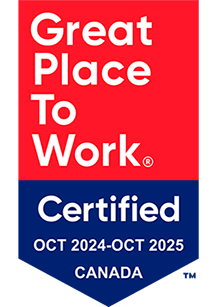During regular business hours
Contact John Ulcar, R&D Manager at Crosslink Technology Inc. 1-800-563-3769 for Transportation of Dangerous Goods information.
Outside regular business hours:
In a transportation emergency only Call CANUTEC collect at (613) 996-6666
CANUTEC provides immediate advice and scientific data to those responding to emergencies involving dangerous goods such as fire, spill, leak or human exposure.
Just about every State in the United States and every Province in Canada regulate the disposal of chemicals including epoxy and urethane compounds. In liquid form, disposal must be carried out by properly licensed companies.
Some major cities in North America have designated environmental days during which they accept spent batteries, unused paint and similar products for disposal. This would be a suitable way to dispose of small amounts liquid epoxy and urethane materials.
An alternate method of disposal would be to solidify the materials and dispose of them as solid waste. This requires some work but by far is the safest method. Solidified epoxy and urethane products are inert if the reaction between the resin and hardener is completed according to the manufacturer's instructions. This process must include completing any post cure instructions if specified by the manufacturer.
Exercise caution when reacting pure resins and hardeners. Some epoxy and urethane compounds can generate excessive amounts of heat when reacted in large volumes. Single component epoxies, requiring heat to solidify, can also generate dangerously high temperatures. Some products can self ignite if not handled properly.
Take all recommended safety precautions and contact the supplier of the product for instructions before proceeding.
It is best to react small amounts of product at a time in heat resistant, steel containers, taking care not to be near any combustible materials.
Do not dispose liquids epoxy or urethane materials in household or industrial garbage. Liquids will seep out of regular containers no matter how well sealed.
Filler settling in epoxy and urethane products is one of the major causes of off ratio cure problems and insufficient or inconsistent cured properties.
Filler settling in epoxy and urethane compounds will depend on the following:
- The filler content in the material
- The chemistry employed
- Viscosity
- The storage temperature
- The storage container size
- Transportation conditions
- Order product in smaller containers
- Order more frequently to reduce storage time
- Store products at room temperature or slightly below room temperature
- Periodically invert the containers in storage. (once per week for 5gal (20 Liter) pails)
- Store heated material under slow continuous agitation
- Use a drum roller to keep the fillers moving within the product
- Ask the supplier to incorporate anti-settling agents
Crosslink Technology Inc. is located in Toronto, Ontario, Canada. This is our head office and main manufacturing plant. We are actively looking for "technically competent" sales agents and distributors in various countries in the world. For the present time, all our off-shore sales are handled from head office and are successfully exporting our products to the following countries:
- USA
- Mexico
- Australia
- Germany
- Hungary
- Peru
- India
The carrier, by accepting the shipment, agrees and certifies that the goods are in order at the time they are picked up. The carrier assumes responsibility and is insured to deliver the shipment intact to its destination. Depending on who is paying the freight (who hired the carrier), claims for damaged goods must be made based on the following:
1. Reject the damaged shipment or at least make a note on the shipping documents that the goods were delivered damaged
2. If the freight was pre-paid by the supplier:
- The goods belong to the shipper until delivered to the final destination. Only the shipper may make a claim for damages
- Determine what, if anything, is rendered unusable.
- Contact the shipper (supplier) with the particulars.
- Provide copies of documentation - including that the shipment was damaged
- Provide a list of the components to be replaced to the supplier.
- The goods belong to the destination customer as soon as they are loaded on the truck. Only the destination customer can make a claim for damages. (the shipper can't)
- Determine what, if anything, is rendered unusable.
- Make a claim with the carrier for the cost of the unusable goods.
All materials supplied by Crosslink Technology Inc. are made fresh to order.
In general, most products do not need any special precautions for shipping. There are however some formulations, such as single component epoxies which should not be over heated or frozen. Certain low viscosity, two component materials may begin to settle when subjected to excessive heat during transportation.
We track all longer distance shipments to detect and solve problems that may cause transportation delays. This is a normal part of our service to insure on time delivery of our products and at the same time, minimize transit time.
The shelf life of Epoxy and Polyurethane compounds depend on the type of formulation involved. In general, products may be classified into the following main categories:



